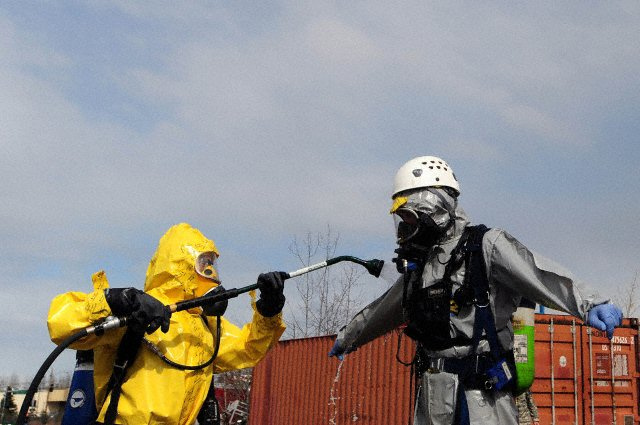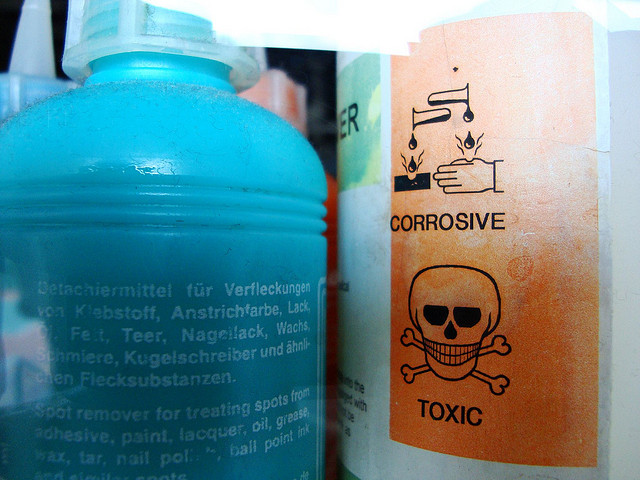Did you know that if all the oil from American do-it-yourself oil changers were recycled, it would be enough motor oil for more than 50 million cars a year? Wow! Imagine how much foreign oil that would eliminate.
Audit, Compliance and Risk Blog
Vehicle Maintenance: Begin Recycling Your Used Motor Oil Today
Posted by STP Editorial Team on Thu, Aug 07, 2014
Tags: Corporate Governance, Business & Legal, Training, Environmental risks, Environmental, EHS, EPA, Transportation
Supreme Court Narrows EPA Authority to Regulate CO2 Emissions
Posted by Jon Elliott on Mon, Jul 21, 2014
Since the US Supreme Court affirmed in 2007 that the Clean Air Act (CAA) provides the Environmental Protection Agency (EPA) with authority to regulate carbon dioxide (CO2) and other greenhouse gases (GHGs), EPA has pursued a growing set of regulatory initiatives. In each, EPA has attempted to fit GHGs into statutory and regulatory programs originally designed for more conventional pollutants – and the entities it targets have sued the agency claiming the stretch to GHGs exceeds EPA’s authority. Each court decision has adjusted the contours of EPA’s CAA authority, legitimizing some stretches and vacating others.
Tags: Corporate Governance, Business & Legal, Environmental risks, Environmental, EHS, EPA, Greenhouse Gas, ghg
NTSB and PHMSA Focus on Facility Response Plans for Pipelines
Posted by Allison Campbell on Mon, Jul 14, 2014
Investigation of the 2010 spill at Marshall, Michigan, the largest on-land spill in US history, underlines the reality that a Facility Response Plan (FRP) is more than a government-required document—an inadequate document or plan can lead to environmental and economic disaster. Owners and operators of onshore pipelines must review and update FRPs every five years from the date of last submission or last approval, and whenever new or different operating conditions arise that would affect the plan. (49 CFR 194.121 Response Plan Review and Update Procedures). PHMSA recently released two Advisory Bulletins reminding operators what it requires in an FRP and listing five of the most common reasons for it to reject an FRP.
Tags: Corporate Governance, Business & Legal, Health & Safety, Environmental risks, Environmental, EHS, EPA, Greenhouse Gas, ghg, Hazcom, Oil & Gas, Transportation
Investigation of Construction Incidents to Reduce Injuries and Fatalities
Posted by STP Editorial Team on Thu, Jul 10, 2014
The Directorate of Construction, Occupational Safety and Health Administration (OSHA) has a website that provides original investigations of collapses and other incidents. Many of the incidents resulted in one or more worker fatalities, and most of them resulted in multi-million dollar property loss, lawsuits, or settlements. Each investigation was performed at the request of an OSHA field office or State Plan OSHA as part of an enforcement inspection.
Tags: Corporate Governance, Business & Legal, Employer Best Practices, Health & Safety, OSHA, Training, Environmental risks, Environmental
Chemical Facility Safety–Progress Report on the President’s Executive Order
Posted by Jon Elliott on Wed, Jul 02, 2014
Last August, President Obama issued an Executive Order (EO 13650) to agencies with responsibilities for chemical facility safety (I blogged about it here). The EO provides for a Chemical Facility Safety and Security Working Group, co-chaired by the Department of Homeland Security (DHS, which administers the Chemical Facility Anti-Terrorism Standards (CFATS) program), Environmental Protection Agency (EPA, which administers the Accidental Release Prevention (ARP) program under Clean Air Act) and Department of Labor’s Occupational Safety and Health Administration (OSHA, which administers Chemical Process Safety Management (PSM) Standard), and also including the Departments of Transportation, Justice (DOJ) and Agriculture. It directs them to work together to improve their operational coordination, and to consult with other security and environmental agencies at all levels of government, as well as the White House.
Tags: Corporate Governance, Business & Legal, Health & Safety, Training, Environmental risks, Environmental, EPA, Hazcom
On June 2, the U.S. Environmental Protection Agency (EPA) proposed a new Clean Power Plan, in which the agency will apply its authority under the Clean Air Act (CAA) to dramatically reduce greenhouse gas (GHG) emissions from fossil fuel-fired electric generating units (EGUs). EPA calculates that these power plants account for roughly one-third of all domestic GHG emissions in the US. Advocates on opposite sides of this controversial proposal claim this Plan would either become the most important US initiative to address climate change, and/or would crash economies through much of the US heartland by strangling coal-fired electricity production. Let’s hope we end up closer to the optimistic scenario!
Tags: Corporate Governance, Business & Legal, Health & Safety, Environmental risks, Environmental, EPA, Greenhouse Gas, ghg
Working as a Senior Editor at Specialty Technical Publishers, I edit environmental manuals each day. It is not only my job to read about ecological issues, I also really care about protecting our environment.
Tags: Environmental risks, Environmental
It's nearly time to start worrying that outdoor work in the summer sun will lead to heat illness. The federal Occupational Safety and Health Administration (OSHA) provides some guidance to employers and their workers, while the Sun Belt California's Division of Occupational Safety and Health (Cal/OSHA) administers detailed regulatory requirements promulgated under state law. If you have outdoor workers in California you must comply with the following requirements, while if you're anywhere else you should at least consider them.
Tags: Corporate Governance, Business & Legal, Employer Best Practices, OSHA, Employee Rights, California Legislation, Environmental risks, Environmental, EHS, EPA
OSHA 29 CFR 1910.1200: A MUST for Employers That Use Hazardous Chemicals
Posted by STP Editorial Team on Mon, May 12, 2014
Employers that have hazardous chemicals in their workplaces are required by OSHA’s Hazard Communication Standard (HCS), 29 CFR 1910.1200, to implement a hazard communication program. The program must include labels on containers of hazardous chemicals, safety data sheets (SDSs) for hazardous chemicals, and training for workers, and the employer must describe in a written program how it will meet the requirements of the HCS in each of these areas. Employers can implement an effective hazard communication program by following these six steps: learn the standard and identify responsible staff; prepare and implement a written hazard communication program; ensure containers are labeled; maintain Safety Data Sheets (SDSs); inform and train employees; and evaluate and reassess your program.
Tags: Business & Legal, Employer Best Practices, Health & Safety, Environmental risks, Environmental, EHS, Hazcom
Supreme Court Reinstates EPA Interstate Regulation of Upwind Air Emissions
Posted by Jon Elliott on Wed, May 07, 2014
On April 29 the US Supreme Court reversed a lower court decision, reinstating US Environmental Protection Agency (EPA) rules requiring states to control emissions of air pollutants that contaminate downwind states (EPA v. EME Homer City Generation, LP). The Cross-State Air Pollution Rule (CASPR, or the “Transport Rule”) implements “Good Neighbor” provisions in the Clean Air Act (CAA) designed to ensure that upwind states’ emissions don’t prevent a downwind state from meeting air quality standards. This ruling frees EPA to implement rules requiring tighter emission controls on pollutant sources in upwind states.
Tags: Business & Legal, Health & Safety, Environmental risks, Environmental, EHS, climate change, Transportation










